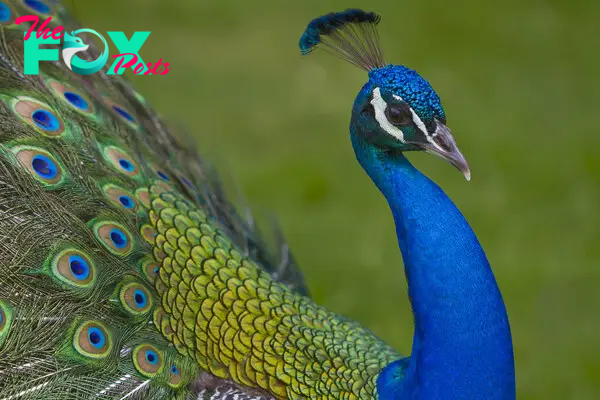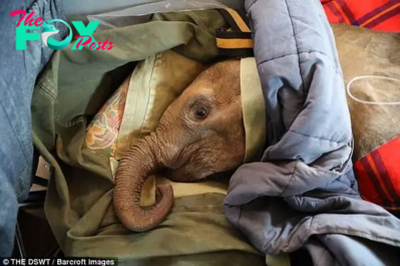Animals
The Majestic Beauty of Peacocks
The peacock, scientifically known as Pavo cristatus, is one of the most beautiful and recognizable birds in the world. Native to South Asia, including India, Sri Lanka, and Myanmar, the peacock is celebrated for its striking plumage and majestic display, making it a symbol of beauty, grace, and regality. The male, known as a peacock, is particularly noted for its vibrant and iridescent tail feathers, while the female, called a peahen, is more subdued in coloration.

One of the most stunning features of the peacock is its tail, also known as a train. The train consists of elongated upper tail coverts that can reach up to 6 feet in length and are adorned with eye-catching patterns of blue, green, and gold. These feathers are not actual tail feathers but rather specialized feathers that overlay the short tail. The iridescent colors are a result of microscopic structures that reflect and refract light, creating a shimmering effect.

During courtship displays, the male peacock fans out its train into a magnificent fan shape, showcasing the vibrant eyespots and creating a mesmerizing spectacle. This display is accompanied by a series of calls and a distinctive rattling sound made by vibrating the quills of the tail feathers. The combination of visual and auditory signals is designed to attract the attention of peahens, who choose mates based on the quality and size of the train.

Peacocks have significant cultural and symbolic importance in many societies. In Hinduism, the peacock is associated with various deities, including Saraswati, the goddess of wisdom and learning, and Kartikeya, the god of war. The bird is also considered a symbol of immortality, resurrection, and renewal in various cultures, reflecting its majestic appearance and vibrant plumage.

The natural habitat of the peacock includes open forests, grasslands, and agricultural areas, where they can forage for food. They are omnivorous, feeding on a diet that includes seeds, fruits, insects, small maMMAls, and reptiles. Their strong legs and sharp beaks enable them to dig for food and defend themselves against predators. Peacocks are also known for their loud calls, which can be heard over long distances and are used to communicate with other members of their flock.

Despite their beauty, peacocks face threats in the wild due to habitat loss, hunting, and human encroachment. Conservation efforts are essential to protect their natural habitats and ensure sustainable populations in the wild. In some regions, peacocks are protected by law and considered a national symbol, such as in India, where it is the national bird.

Peacocks are not just found in the wild; they are also commonly kept in captivity in zoos, parks, and private estates. Their striking appearance and graceful demeanor make them popular attractions. In captivity, peacocks require spacious enclosures with plenty of vegetation and access to fresh water. Breeding programs in zoos and conservation centers play a crucial role in maintaining Healthy populations and raising awareness about the importance of protecting these magnificent birds.

Interestingly, the peacock’s train is shed and regrown annually, a process that is linked to their breeding cycle. After the mating season, the peacock loses its long feathers, which grow back in preparation for the next breeding season. This natural cycle ensures that the male’s display is always at its most impressive during the time when it is needed most to attract mates.

The peacock’s beauty has also inspired artists, designers, and writers throughout History. Its vibrant colors and intricate patterns have been depicted in various forms of art, from paintings and sculptures to textiles and jewelry. The peacock motif is often used to symbolize beauty, elegance, and sophistication in fashion and interior design.

In conclusion, the peacock is a bird of extraordinary beauty and cultural significance. Its iridescent plumage, elaborate courtship displays, and symbolic associations make it a fascinating subject of study and admiration. Protecting the peacock and its natural habitat is crucial to preserving this majestic bird for future generations to enjoy and appreciate. The peacock’s presence in both the wild and human culture highlights the deep connection between nature and human creativity.
-

 Animals1h ago
Animals1h agoMotherly Defense: Eland Protects Calf from Cheetah, Kicking the Predator in a Heartwarming Display of Maternal Courage
-

 Animals1h ago
Animals1h agoHeartwarming Rescue: Anonymous Hero Saves Adorable Orphaned Bear Cub Found Hugging Her Deceased Mother in the Wild
-

 Animals7h ago
Animals7h agoTouching Moment: Distressed Mama Fox Cries Out for Help to Save Her Precious Baby
-

 Animals8h ago
Animals8h agoHeartwarming Moment: Police Gently Assist a Sloth Refusing to Move on the Road, Capturing Hearts with Their Kindness
-

 Animals10h ago
Animals10h agoTriste porque nadie dice hola: confiar y proteger a tu amigo peludo.lamz
-

 Animals12h ago
Animals12h agoWhales: Majestic Giants of the Ocean H12
-
Animals12h ago
Whales: Giants of the Ocean h12
-

 Animals13h ago
Animals13h agoThe abandoned dog implored passersby for affection, desperately pleading for them not to leave him alone on the street



















